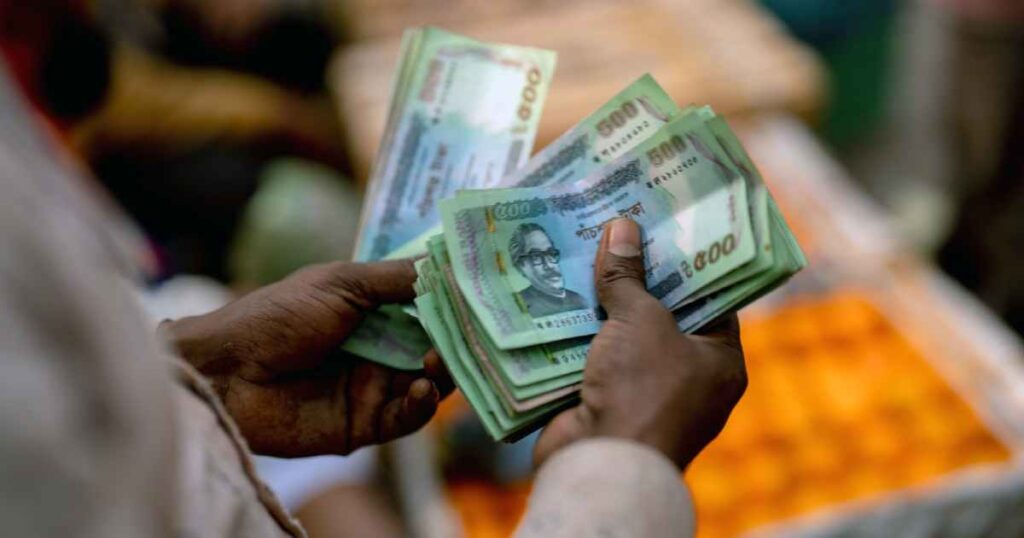Bangladesh’s taka is expected to plunge further into record-low territory as the central bank loosens its control over the currency, according to Moody’s Ratings.
Young Kim, an analyst at the rating firm in Singapore, projects that the taka will likely weaken by another 2% to around 120 per dollar by the year’s end. This forecast comes as the currency has been hitting a series of record lows in recent days.
The central bank’s recent introduction of a crawling peg system is anticipated to align the taka’s value more closely with its rate in the unofficial market, Kim explained. This adjustment is part of a broader package of policies recommended by the International Monetary Fund, which provided Bangladesh with a $4.7 billion bailout program last year. This policy shift aims to help the nation prevent further depletion of its foreign exchange reserves—a factor Fitch Ratings cited when it downgraded Bangladesh’s credit score further into junk status in May.
“Most of the pressure for Bangladesh is external, centered around the fixed-exchange rate that caused a distortion between the market and the official rate,” Kim noted. “This significant devaluation of the taka helps reduce some of these imbalances by narrowing that gap.”
In May, the central bank implemented the crawling peg exchange rate system and set the mid-rate at 117 taka per dollar. This move prompted an almost 8% decline in the currency this quarter. On Tuesday, the taka weakened further by 0.3%, reaching 117.7 against the dollar and closing at a new low.
Amidst the currency devaluation, Bangladesh is also cutting spending and raising taxes to narrow the budget deficit and boost revenues, as the country faces a steady erosion of foreign reserves. To curb inflationary pressure, the central bank has transitioned to market-based interest rates, responding to the fastest pace of price increases seen in seven months in May.

